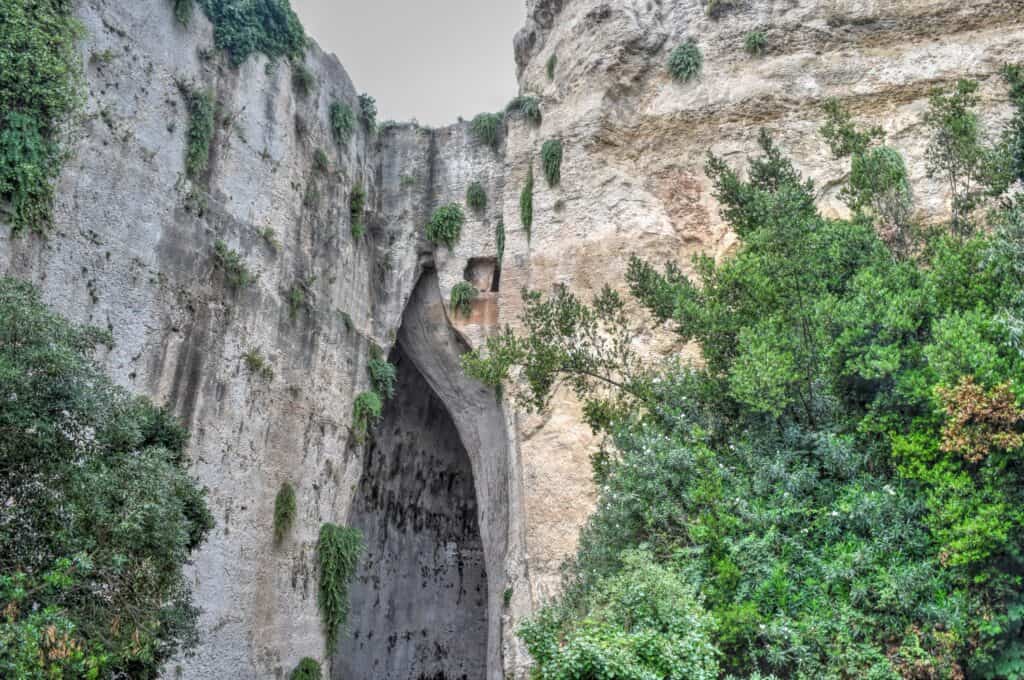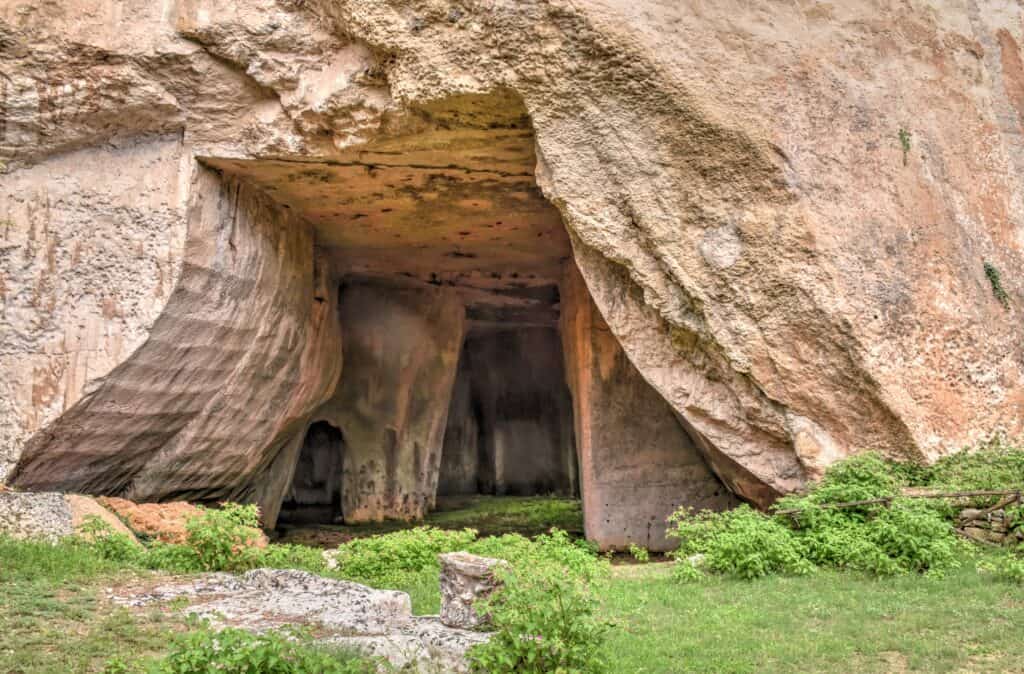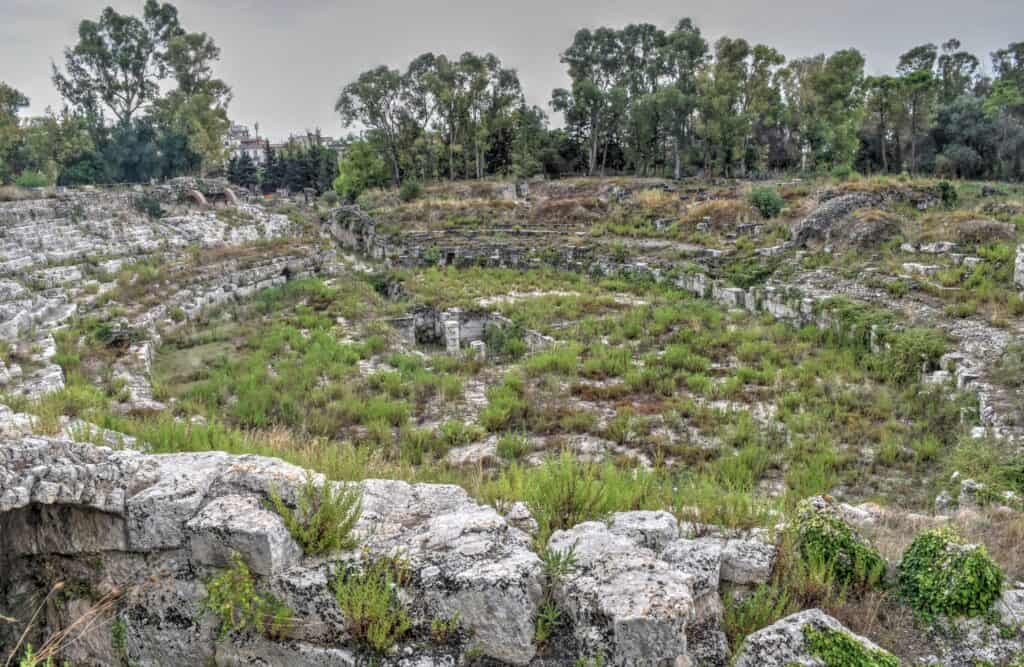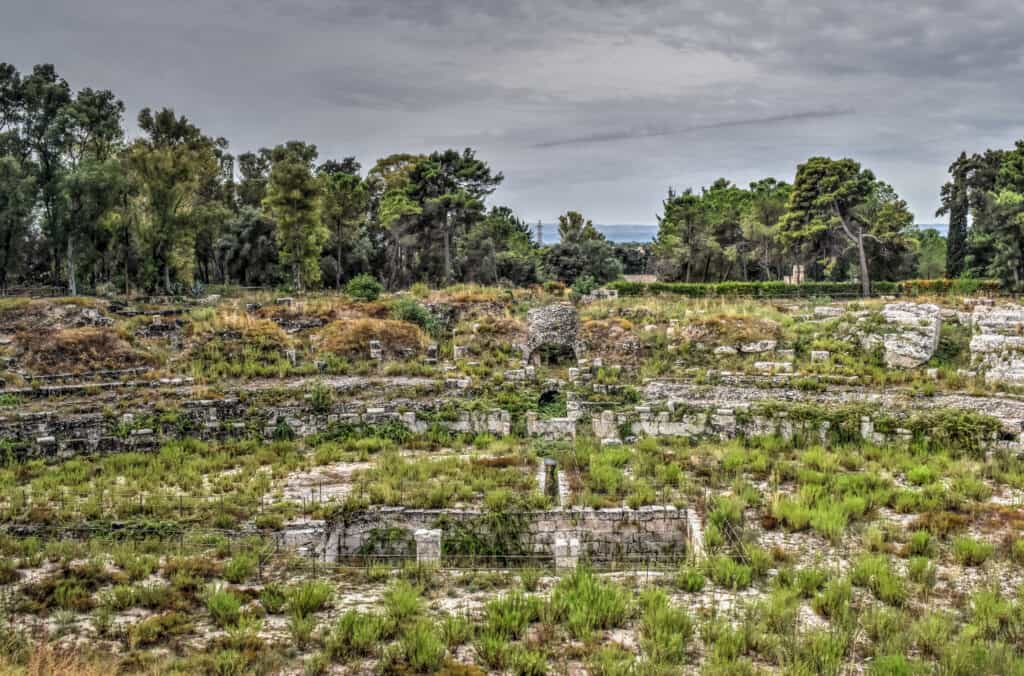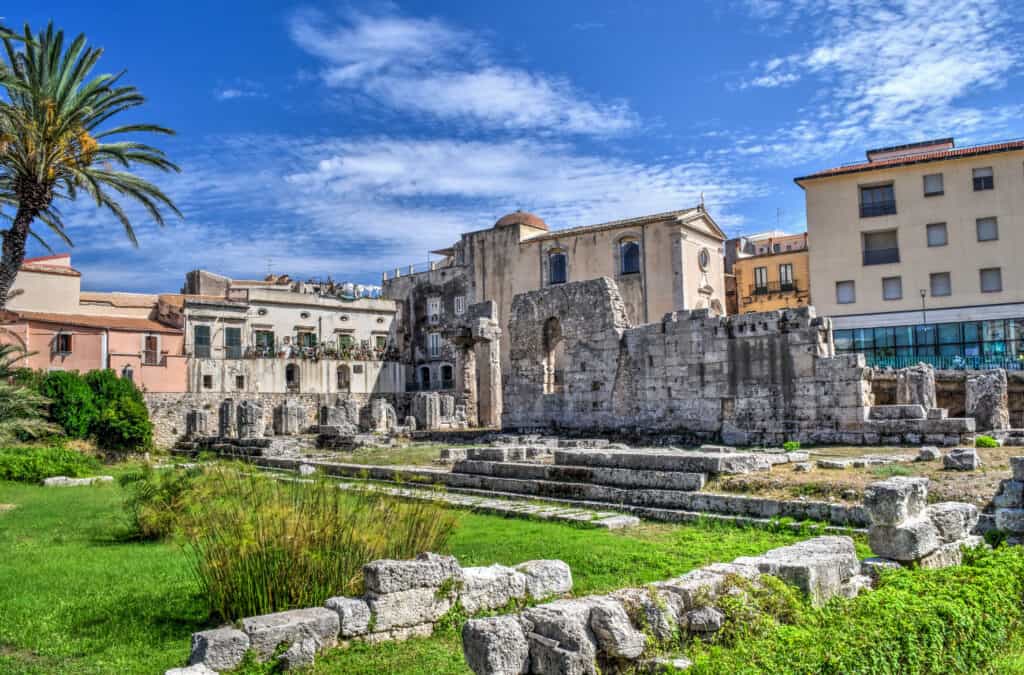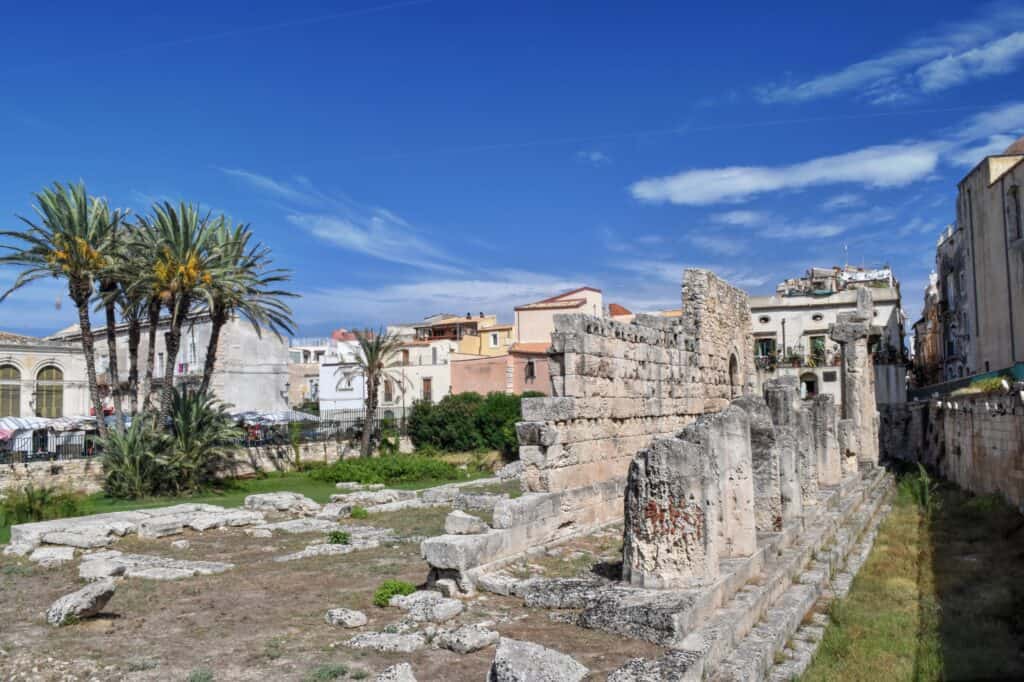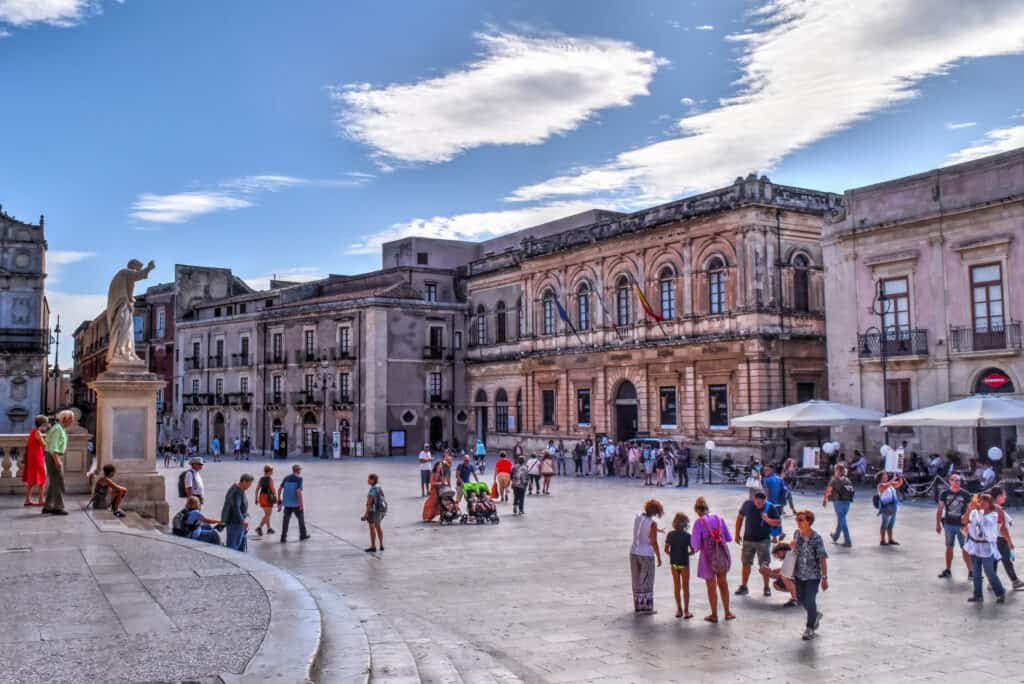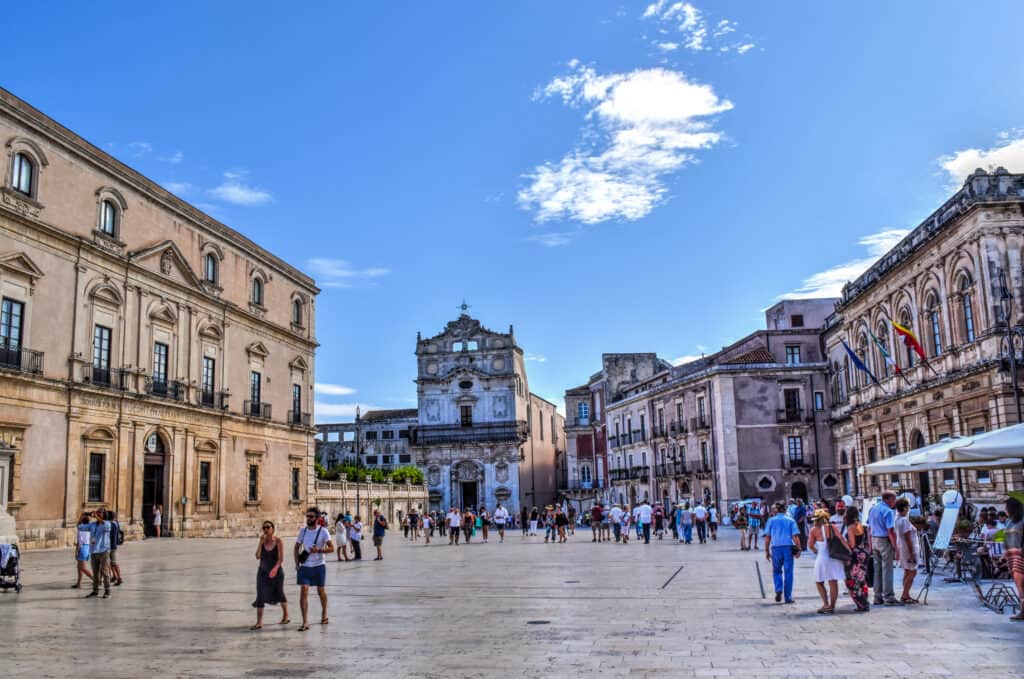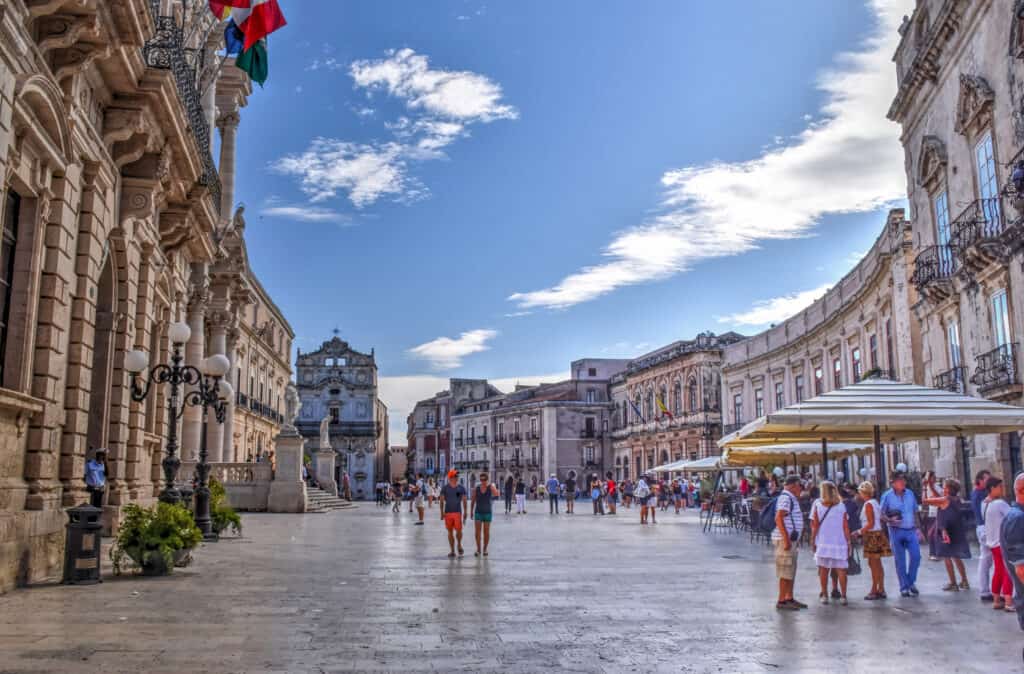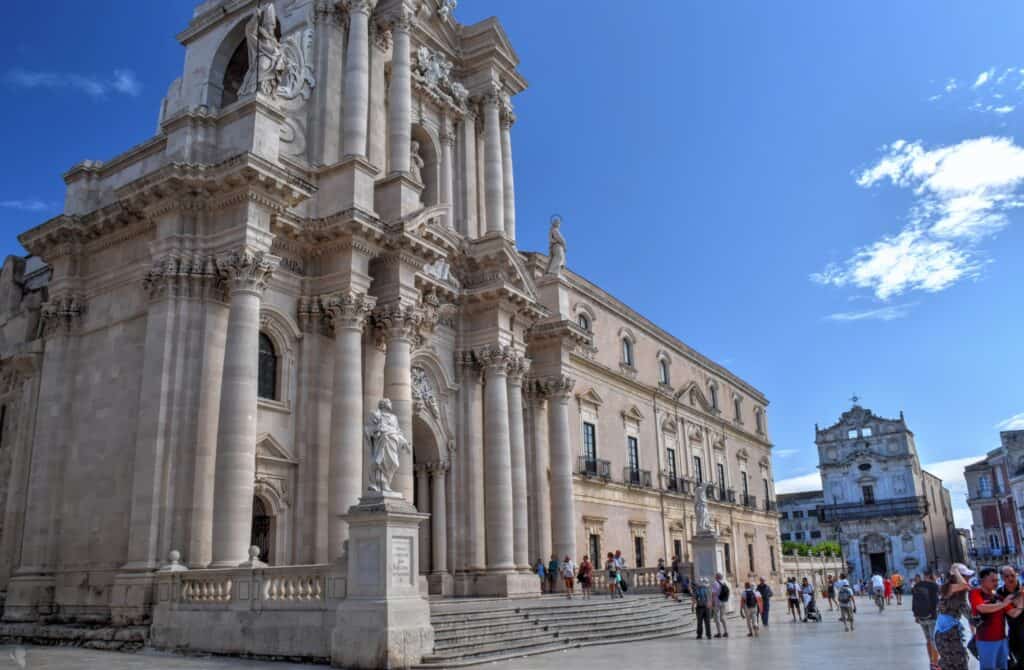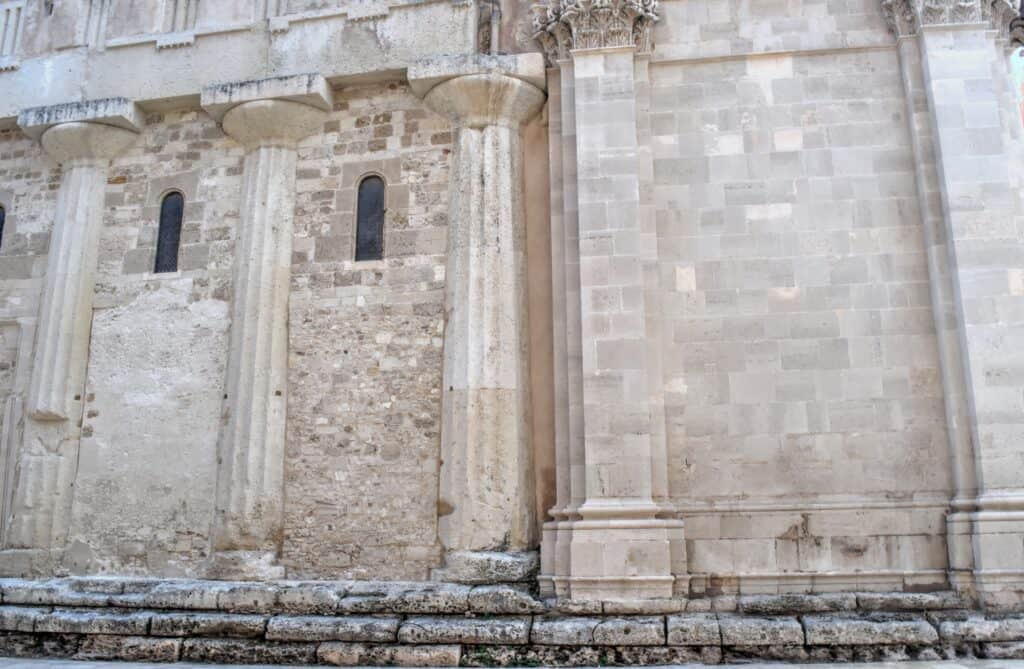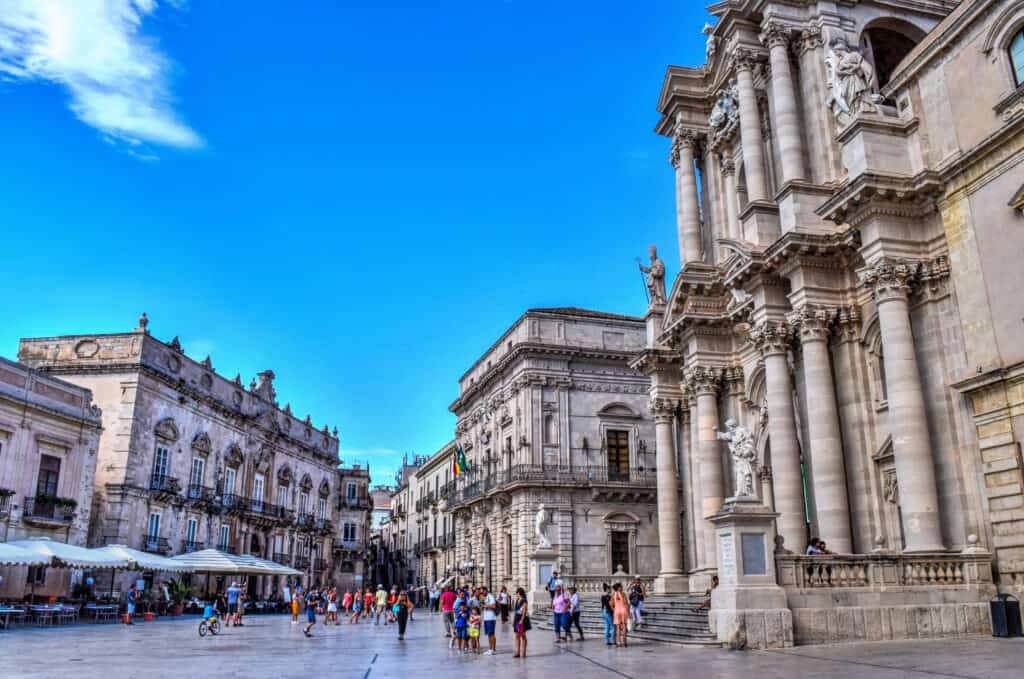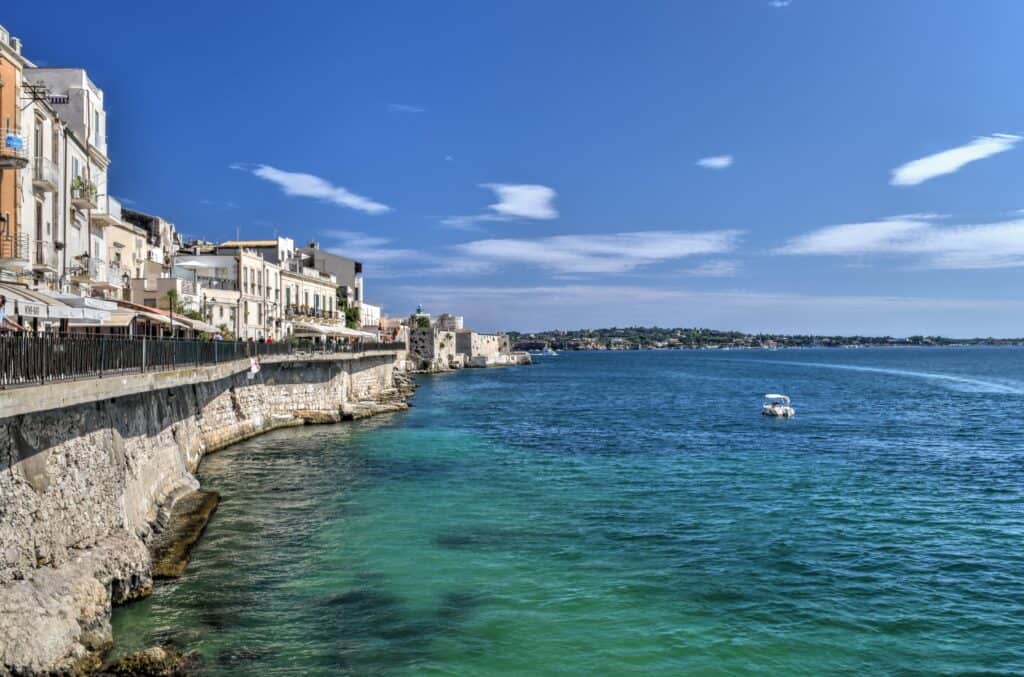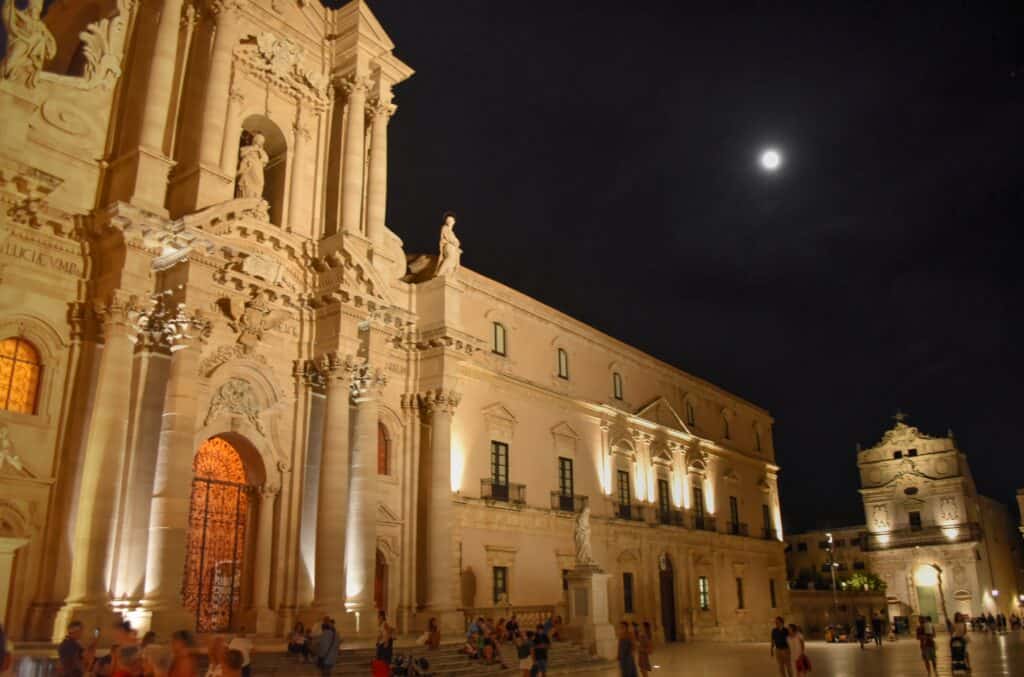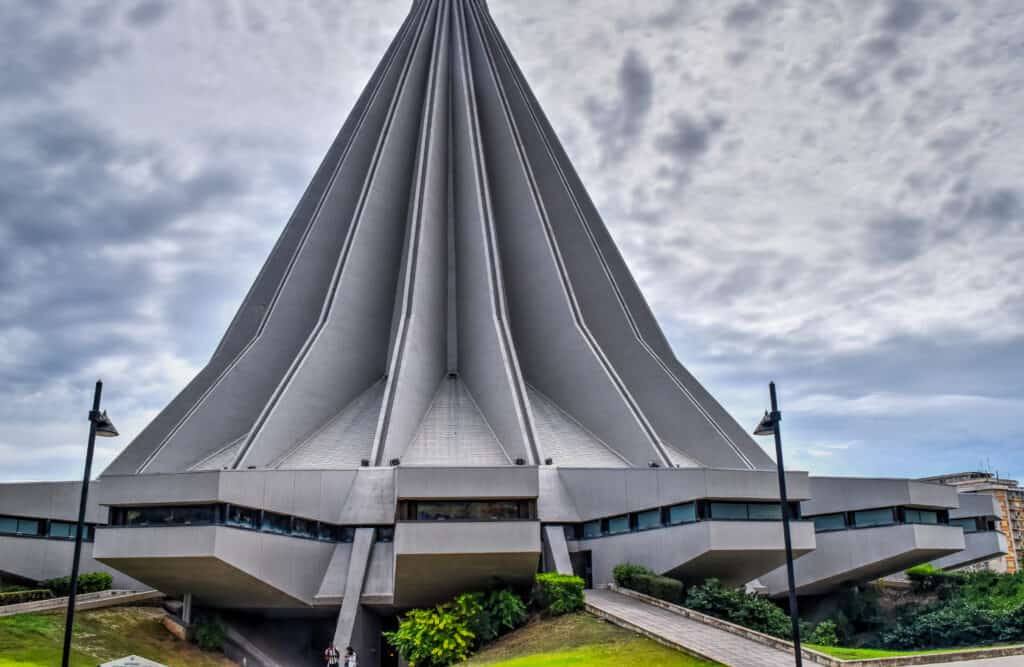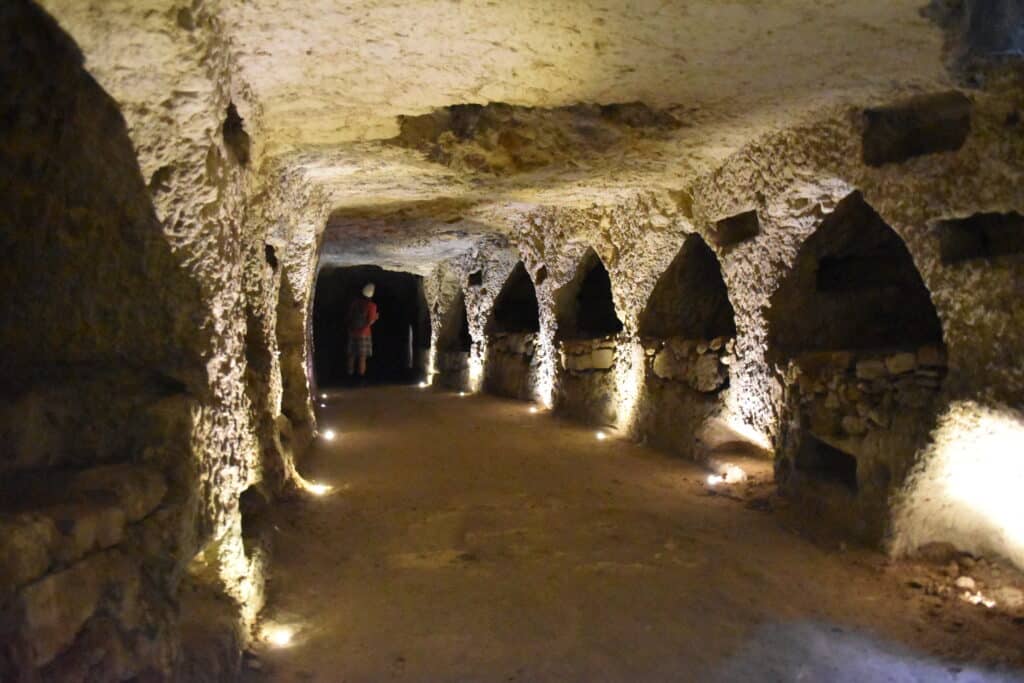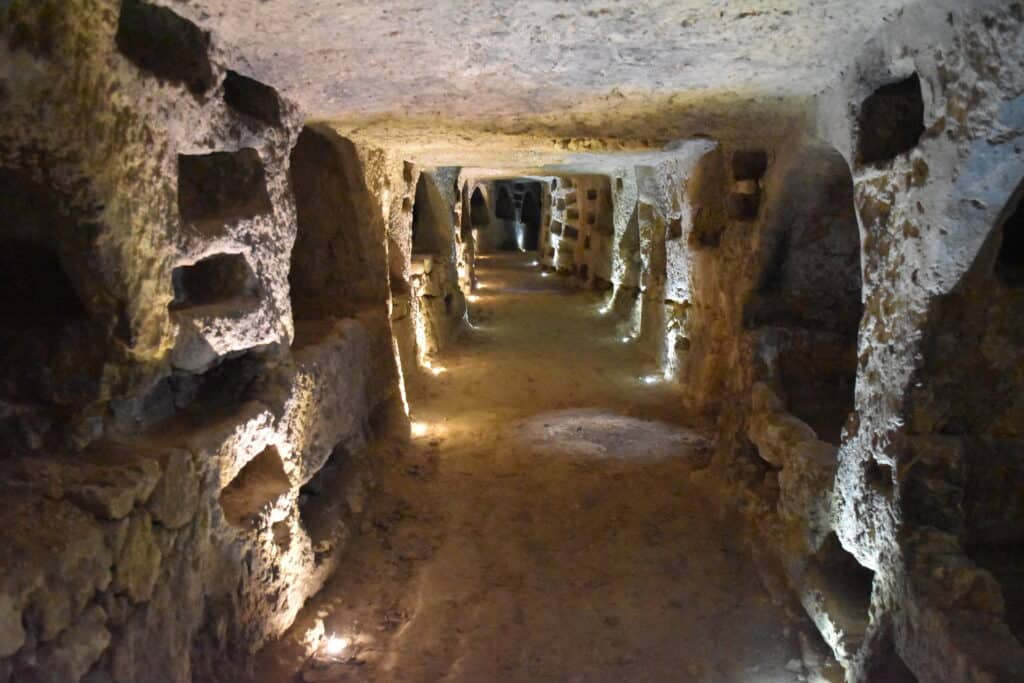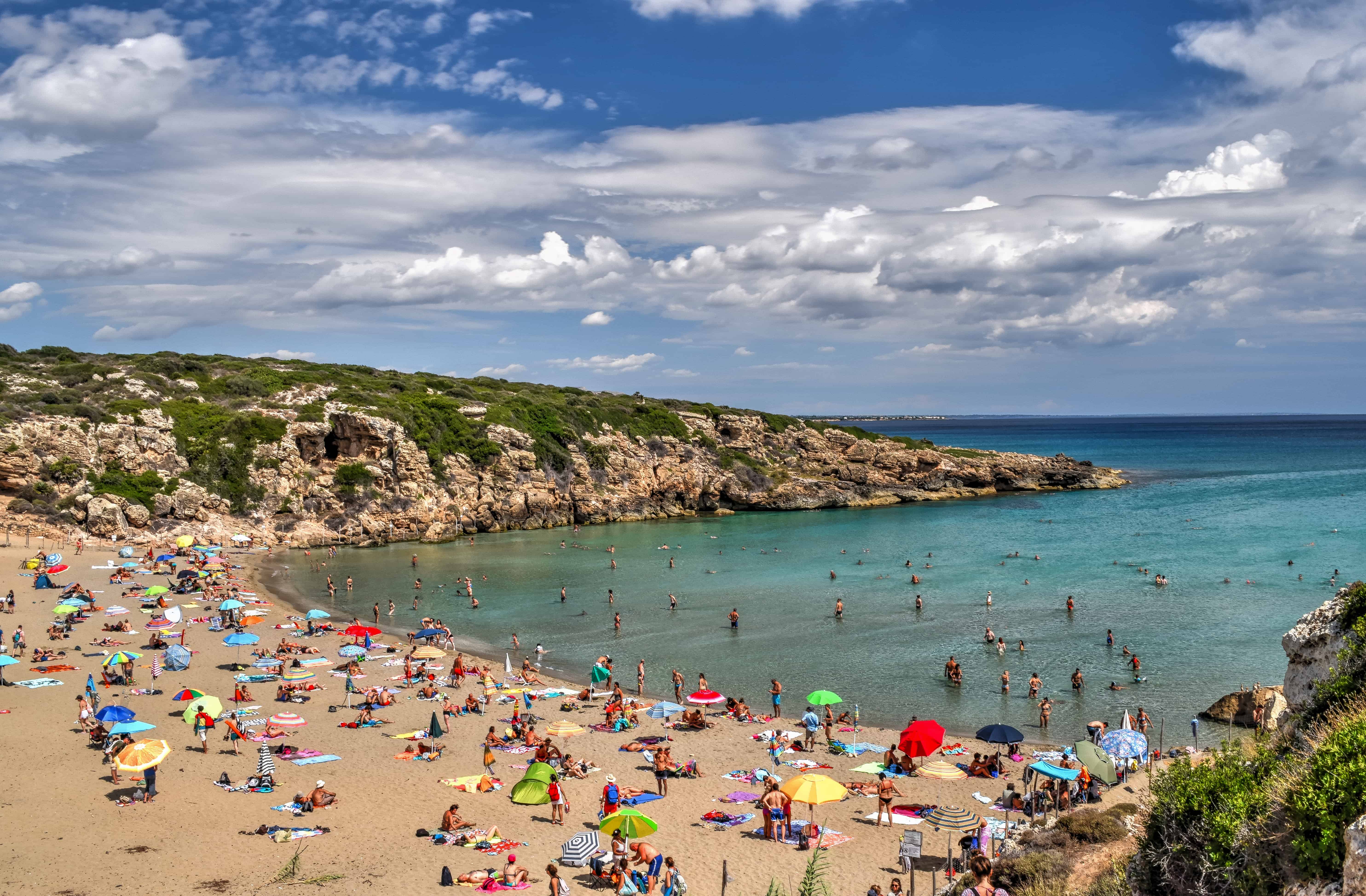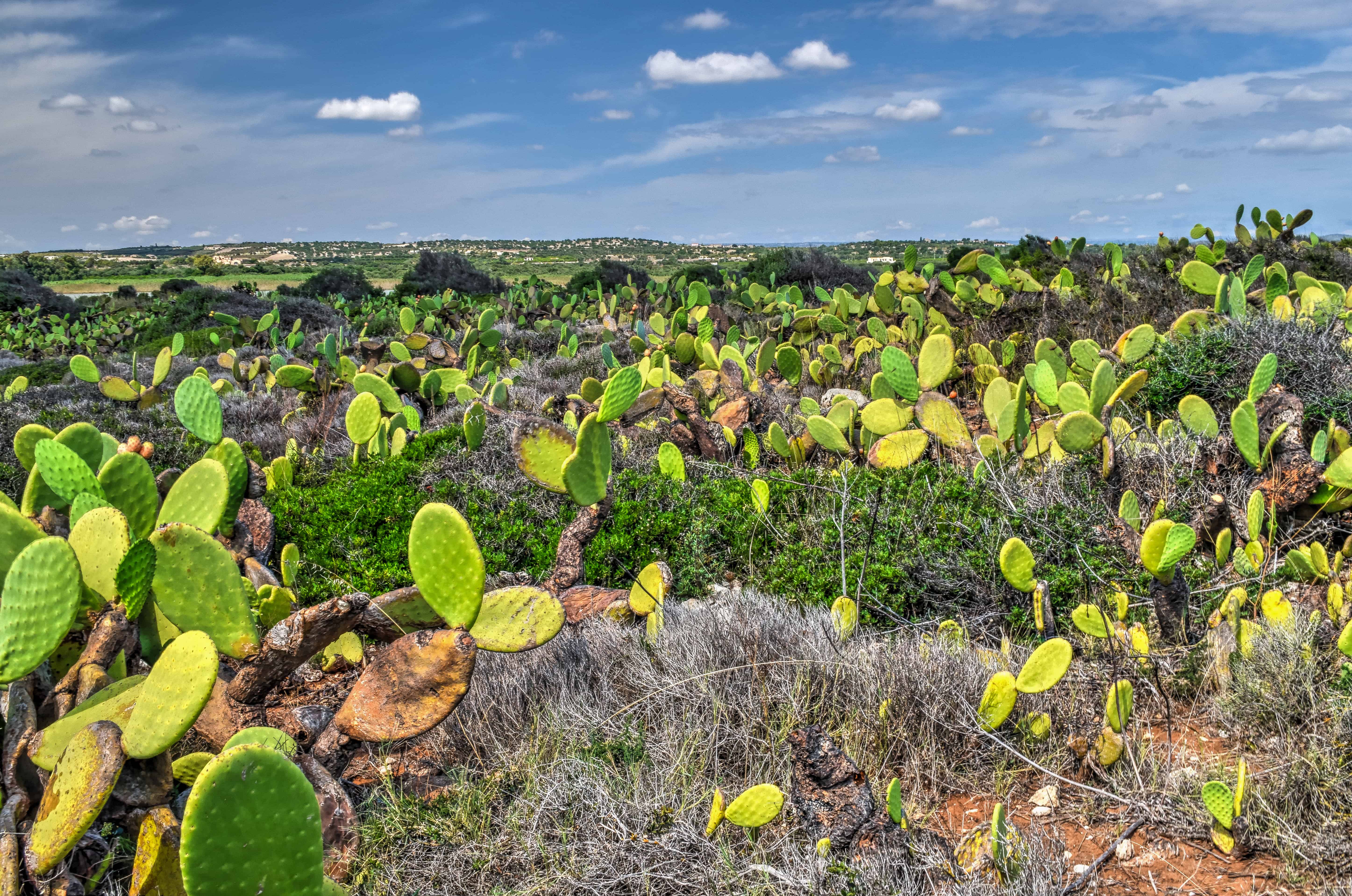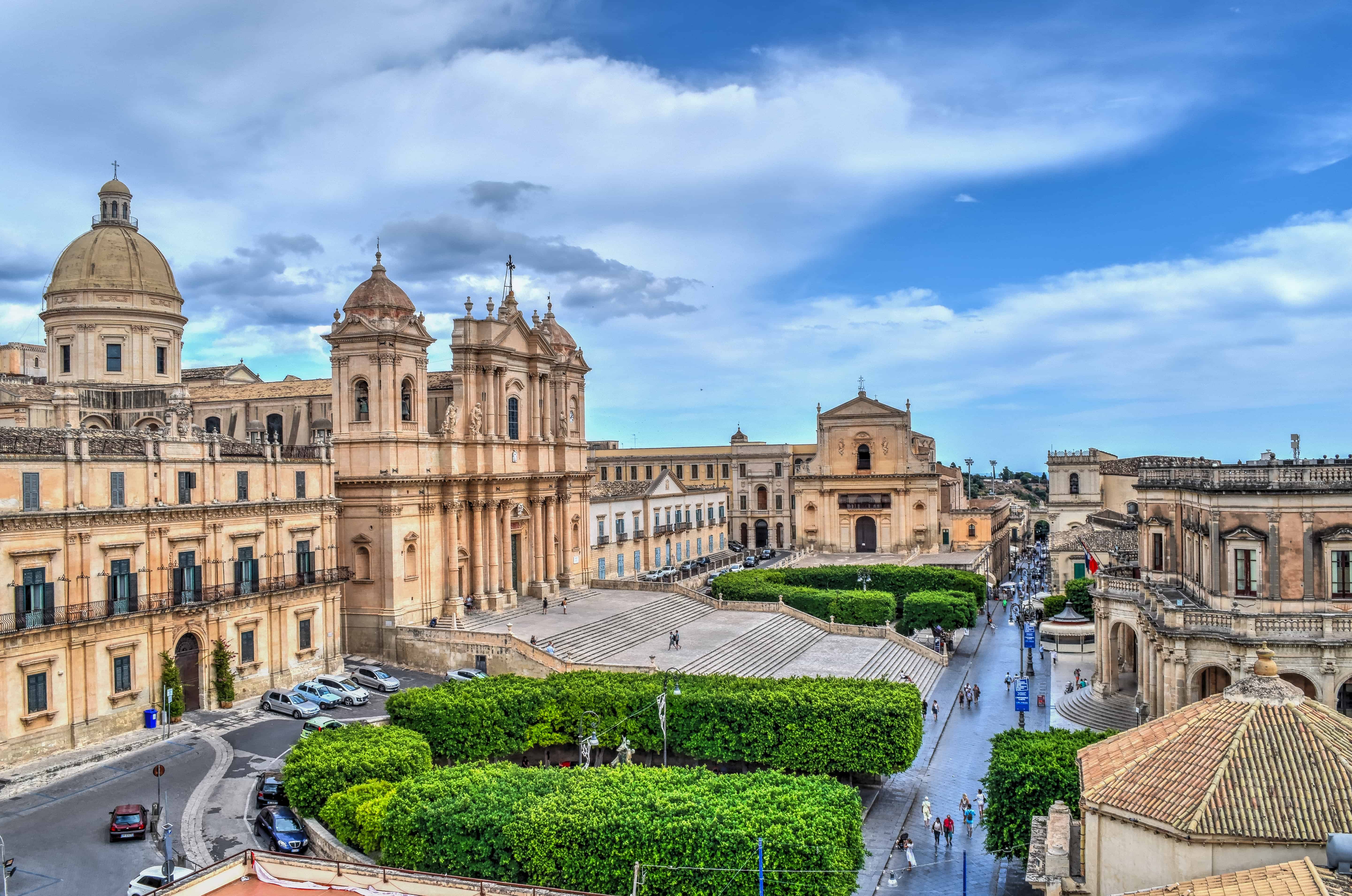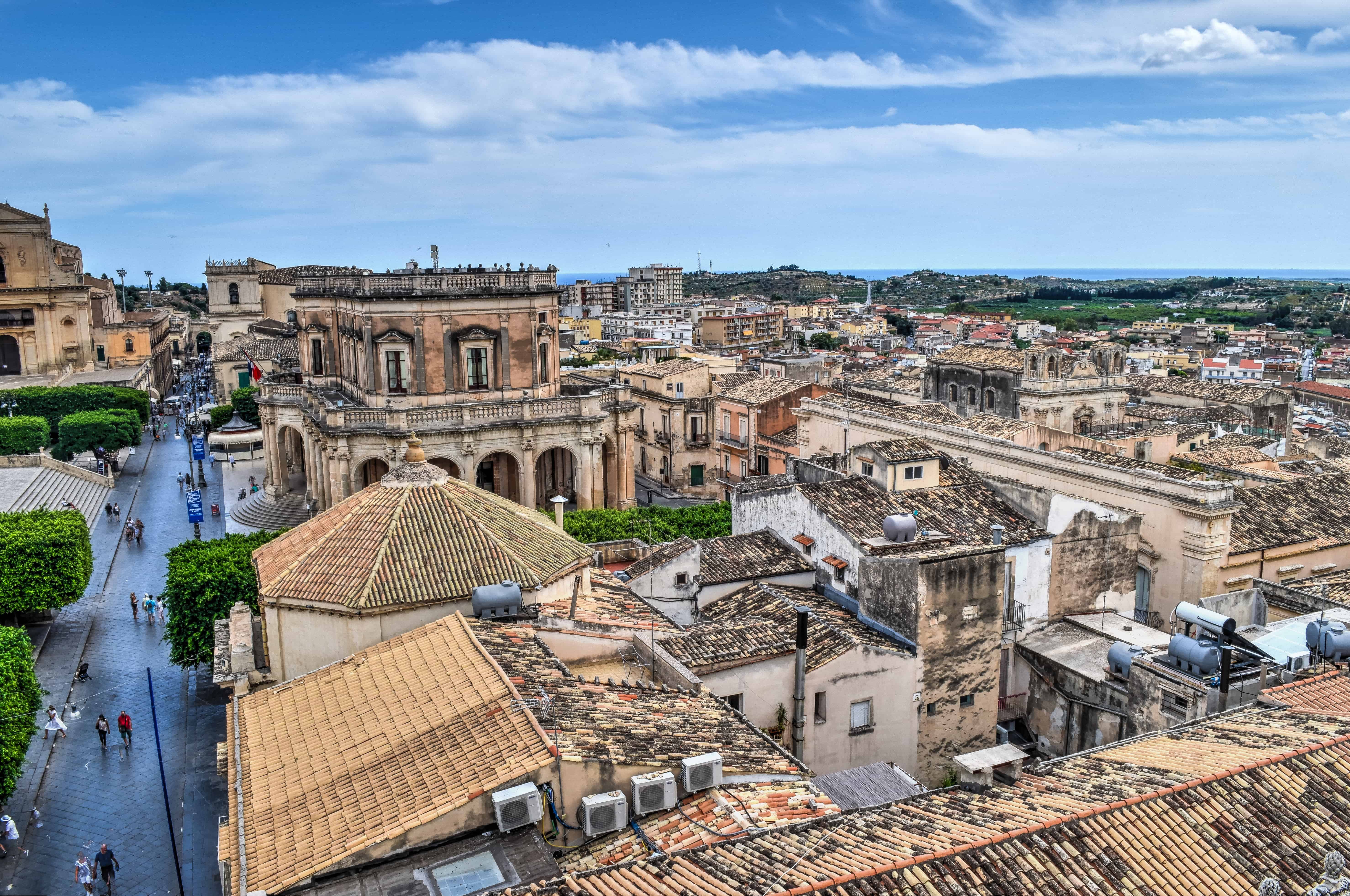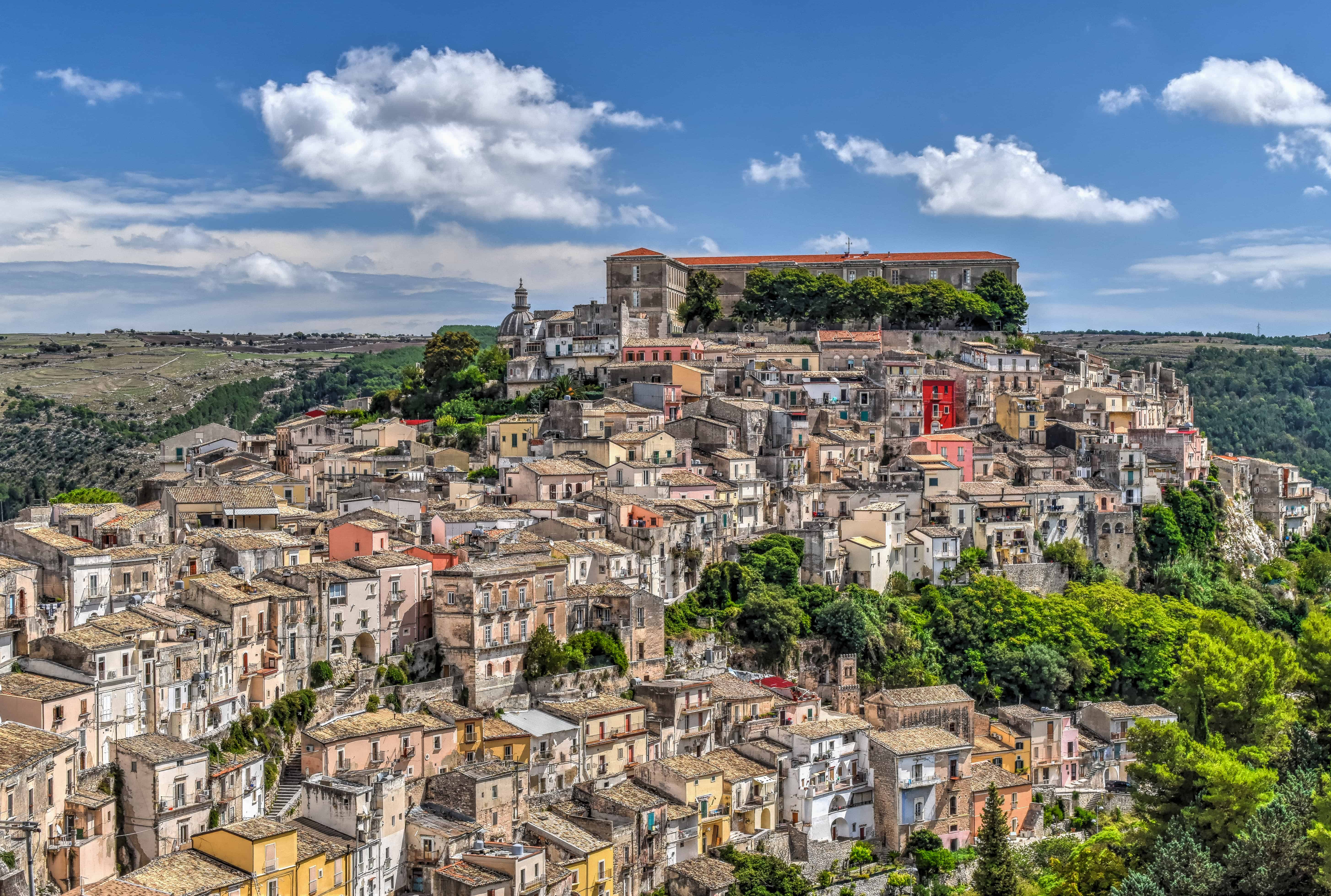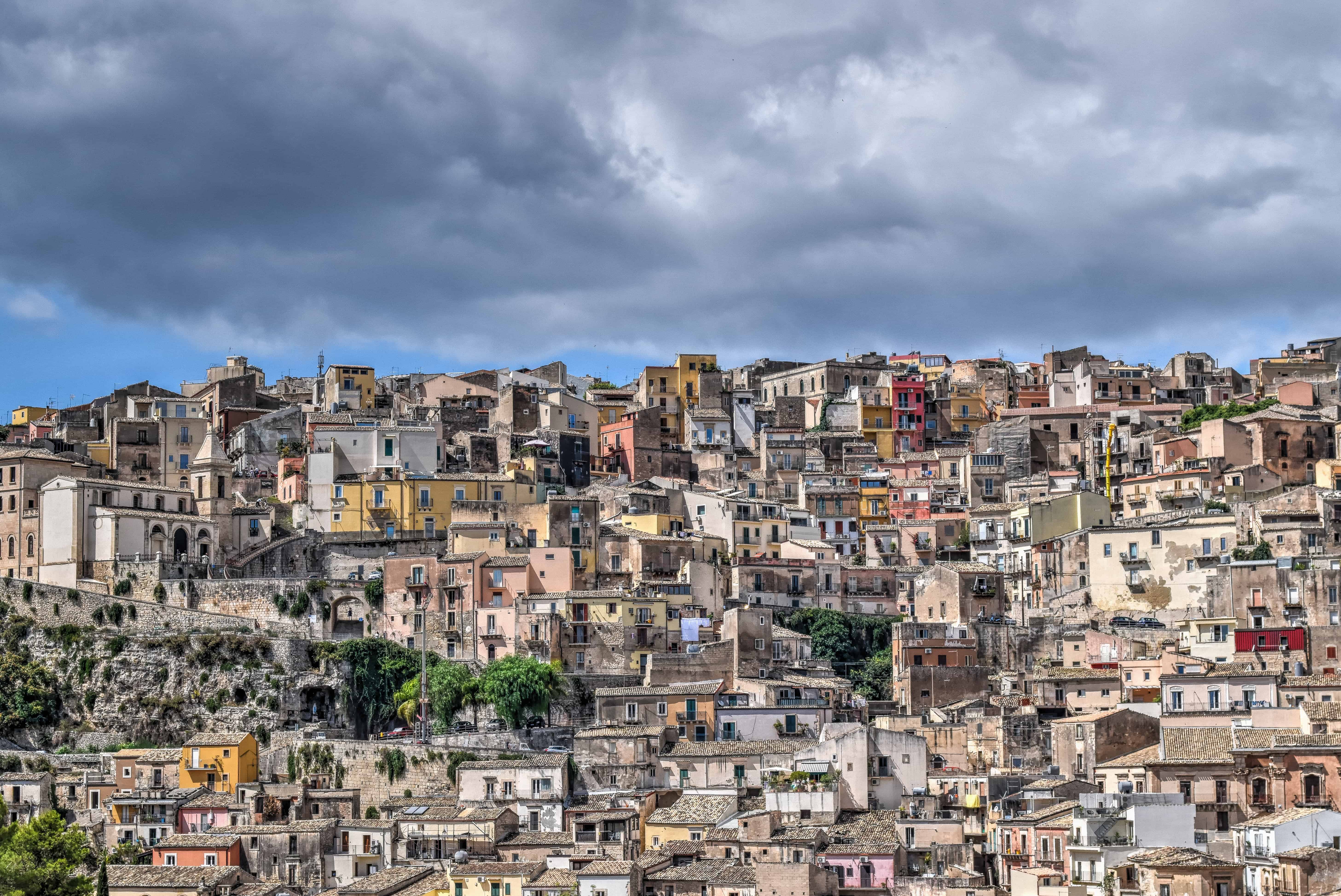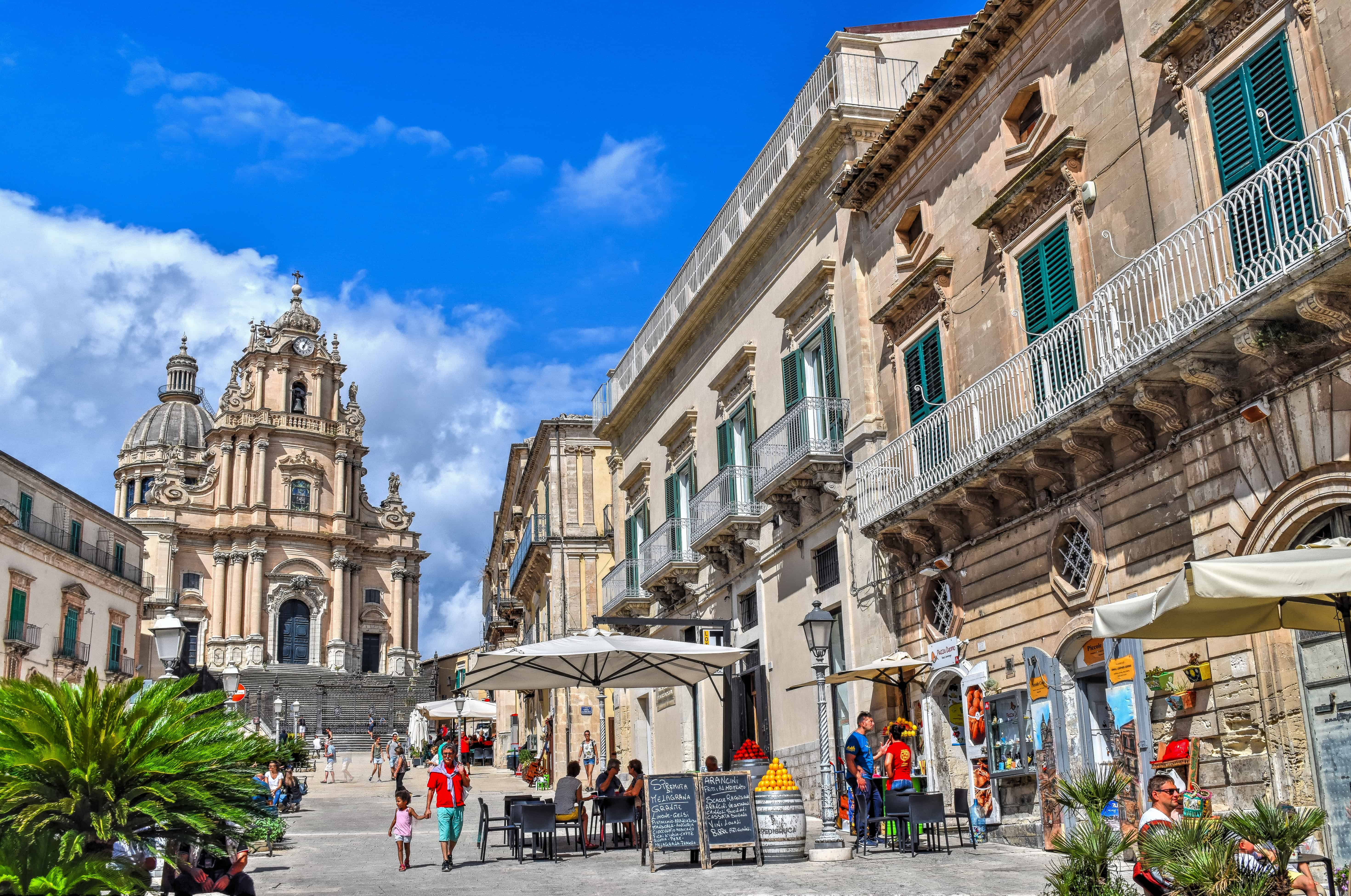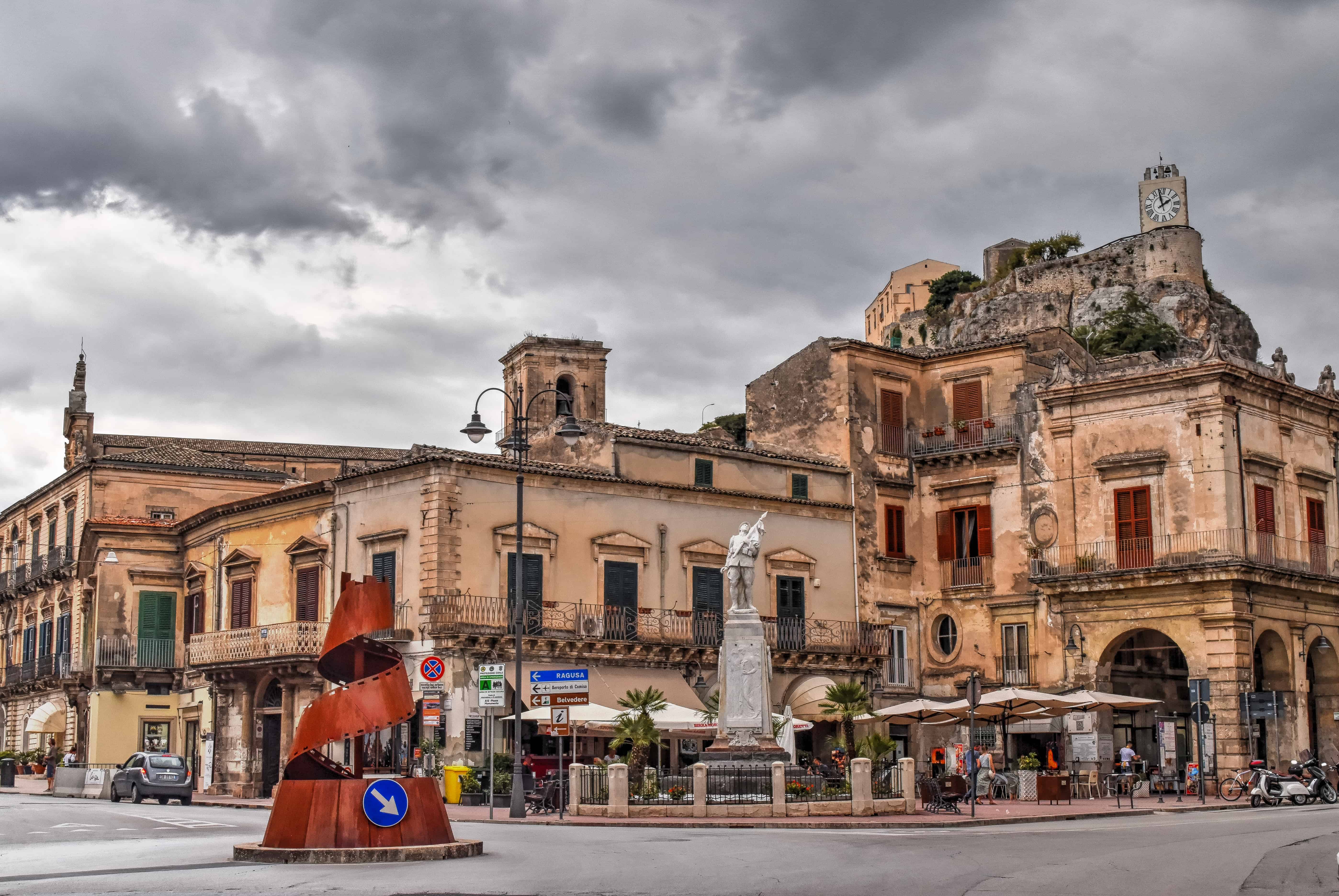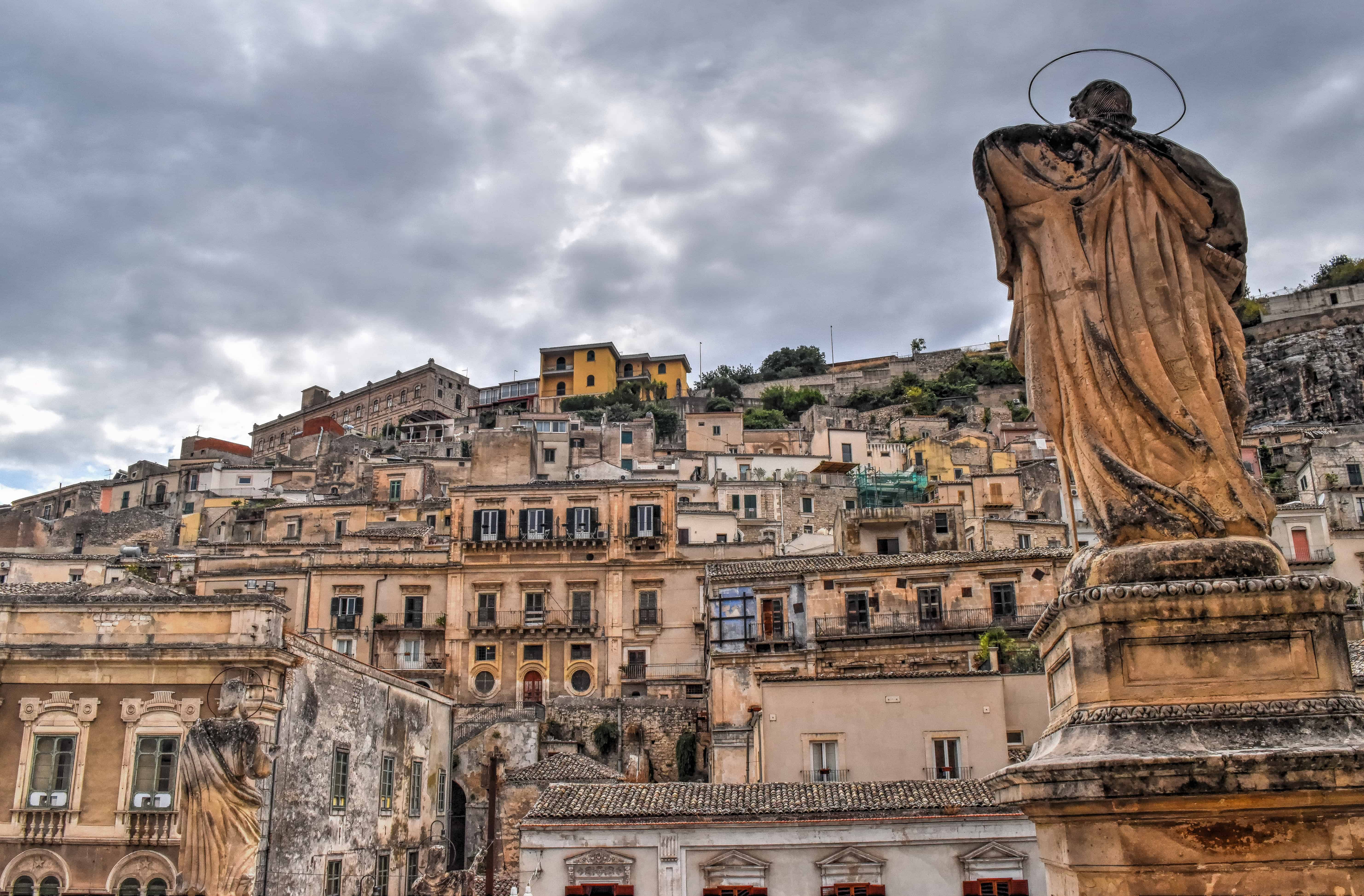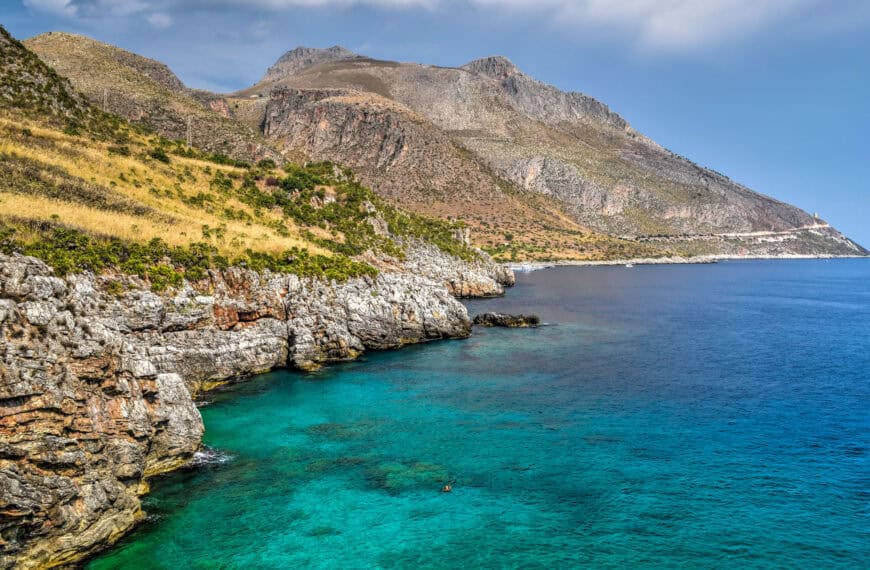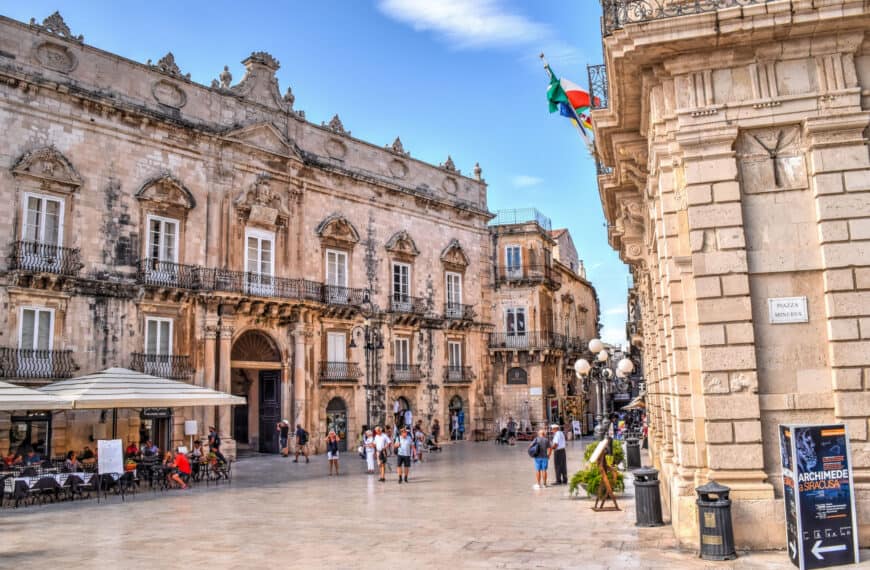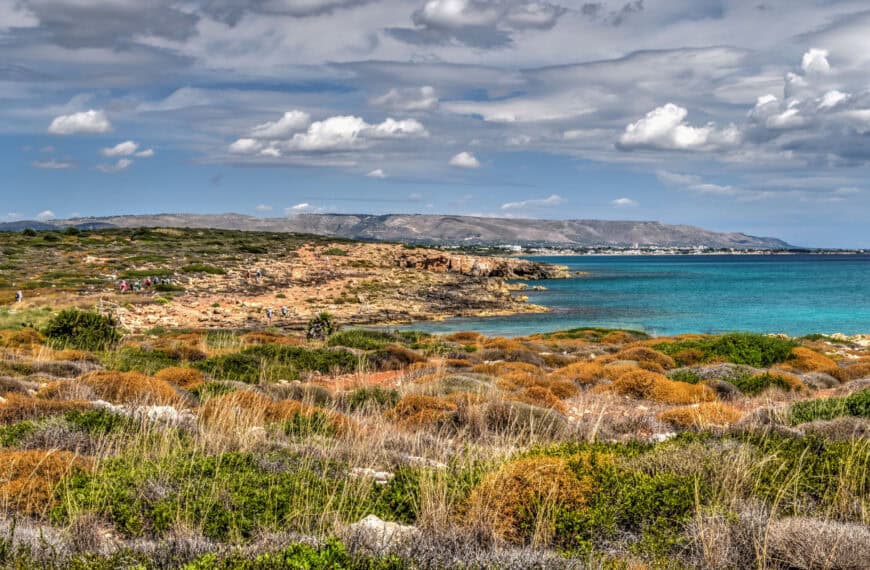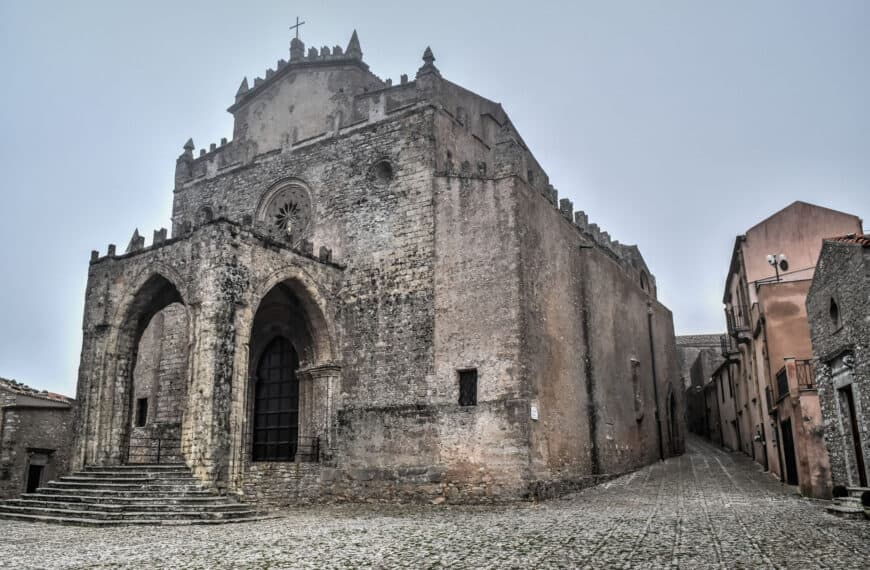If you want to travel to Sicily, Siracusa and Ortigia (Siracusa’s island historical centre) are definitely not to be missed. Inhabited for over 3,000 years and renowned for its Greek heritage, it is a UNESCO landmark for its “remarkable testimony of the Mediterranean cultures over the centuries” and makes for a perfect weekend escape in any season. Siracusa was probably our favourite city to visit during our three-week stay in Sicily. It is a fascinating town with a beautiful historical center and is packed with things to see and do, including numerous historical sites from the Greek and Roman time periods. Below we present our How to Spend a Day in Siracusa Travel Guide, assuming you have just one full day there. We will also suggest how to spend several days in the city should you be able to stay longer.
Disclosure: This page (How to Spend a Day in Siracusa (Sicily)) may contain affiliate links to products. At no additional cost to you, we may receive a commission for purchases made through these links. We only recommend products or services we personally believe in. More details can be found on our disclosure and policies page.
Orientation
Siracusa is the capital of the province of the same name, on Sicily’s southeastern coast. It is located 70km south of Catania and 120km south of Taormina. It is Sicily’s third largest city with a population of 120,00.
It is one of the oldest cities in the Mediterranean and has a wonderful collection of historical sites from both the ancient Greek and Roman time periods. It was considered one of the main powers in the Mediterranean Sea during these ancient times and was the most important city of Magna Graecia (a collection of Greek cities in southern Italy), and even defeated the mighty Athens and at the height of its economic, political and military powers, the city had a population of 300,000.
While most of your time should be spent in Ortigia – the city’s idyllic historical center set on a small island (at the bottom of the below map), there are several sights of interest in the more modern part of Siracusa that are also very worthy of your time, such as the ancient greek ruins of the Neapolis Archaeological Park.
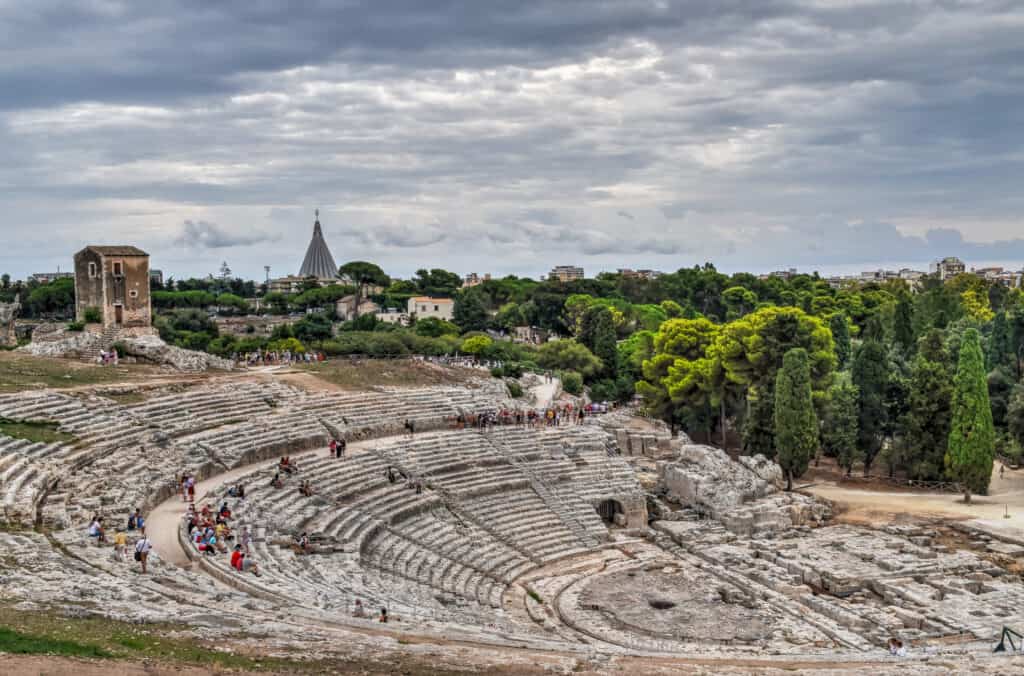
While you could easily spend several days visiting the city (we did), we will try to focus on the main sights and activities you should see and do if you only have a day in town. If you plan on spending more than a day, do check out our Top things to see and do in Siracusa page for some additional sites to see and activity ideas, including short day trips from Siracusa to either beach destinations or to some historic Baroque towns in Sicily’s southeast.
Morning
After starting your day with a nice cornetto and cappuccino at one of the local cafes (we can recommend Cafe Agora, which was close to our Airbnb in the Santa Lucia neighbourhood), we suggest you head straight for the Neapolis Archaeological Park and Greek Theater in the modern part of town. (The park is indicated by the top left purple marker in the above map). If you are staying in Ortigia, Siracusa’s historic center, the Park is roughly a 25-35 min walk from your location, depending on where in Ortigia you are staying. Alternatively, you can catch a bus shuttle that connects Ortigia to the Archaeological Park.
The rationale for heading there first is two-fold: the historic center is pretty quiet and lakes some of the liveliness it possesses later in the day, whereas, the Neapolis Archaeological Park gets busier as the day goes on. Also, if you are visiting during the summer months, there is little shade to hide under at the Park. Regardless of the time of year, we suggest that you try arriving shortly after the park opening. For current timetables and up-to-date entrance fees, check out the Park’s official website.
Neapolis Archaeological Park and Greek Theater
The archaeological park of the Neapolis hosts the most important ruins of the old Greek-Roman city of Siracusa. The park is divided into three main sections: the Greek Theatre – the largest Sicily, Latomia del Paradiso (Paradise Quarry) – where a very narrow cavern lies that is 76 feet high, and the Roman Amphitheatre.
The park’s first section contains the quarry (pictured above), where prisoners and slaves were kept during ancient times. At the very end of the quarry, you’ll find a narrow but very tall cavern whose particular shape earned it the nickname “Ear of Dionysius” (it is shaped like an ear). It is rumoured to have allowed prison guards to hear every word uttered by the prisoners due to the sound resonance properties of the cavern.
Our favourite section of the Park was the Greek Theater (pictured below). Constructed in the 5th century BC and rebuilt in the 3rd century, the 16,000-capacity amphitheatre cut directly out of the limestone rock with the seats facing the sea providing a wonderful view, especially from the top tiers of the theatre.
The last section is the 2nd-century Roman Amphitheatre, originally used for gladiatorial combats and horse races. The Spaniards, little interested in archaeology, largely destroyed the site in the 16th century, using it as a quarry to build Ortygia’s city walls.
You could easily spend all morning at the park, depending on your interest and walking speed (it’s a fairly large site, with lots of steps when visiting the Greek Theater). We recommend planning to spend at least 90 min there, and up to 3 hours.
Lunch
If you were expeditive in your visit of the Archeological Park, and you have some time for more exploring before lunch, we do recommend that you at least quickly check out the Santuario della madonna delle Lacrime – the fascinating teardrop-shaped Basilica a few blocks from the Park, before heading back to Ortigia. Otherwise, if you are staying an additional day in Siracusa, you can combine the Basilica with some other nearby sites the following day (see our Multi-day itinerary section below).
We highly recommend you go straight for the Ortigia Street Market, located just across the bridges that connect Siracusa to Ortigia. It’s open daily from 7am – 2pm (except on Sundays). Here, you’ll be greeted by an explosion of colours, flavours, and fragrances as you walk past the stalls that sell authentic produce from the region: herbs, tomatoes, ripe blood-red oranges, deep purple aubergines, bright red chilli peppers and lemons. It’s also a great place to pick up a few local specialties for your pantry, including pistachios from Bronte, almonds from Avola, sun-dried tomatoes from Pachino and capers from Pantelleria. In the heart of the market, you’ll come across Caseificio Borderi, a small sandwich shop in the market offering rolls filled with cured meats, cheeses and fresh salads. Alternatively, one block over, you’ll find Fratelli Burgio, a buzzing deli and wine bar that assembles mouthwatering meat and cheese boards.
Afternoon
It’s time to explore Ortigia, and there is no wrong way to go about it. As you make your way into the old town, one of the first sites you will come across is the Temple of Apollo, which dates back to the VI century B.C. and is the oldest temple you’ll find in Sicily.
Not long after, you’ll come across the Fountain of Diana in Piazza Archimede, which depicts the Roman goddess of the hunt, and protector of Ortygia in ancient times.
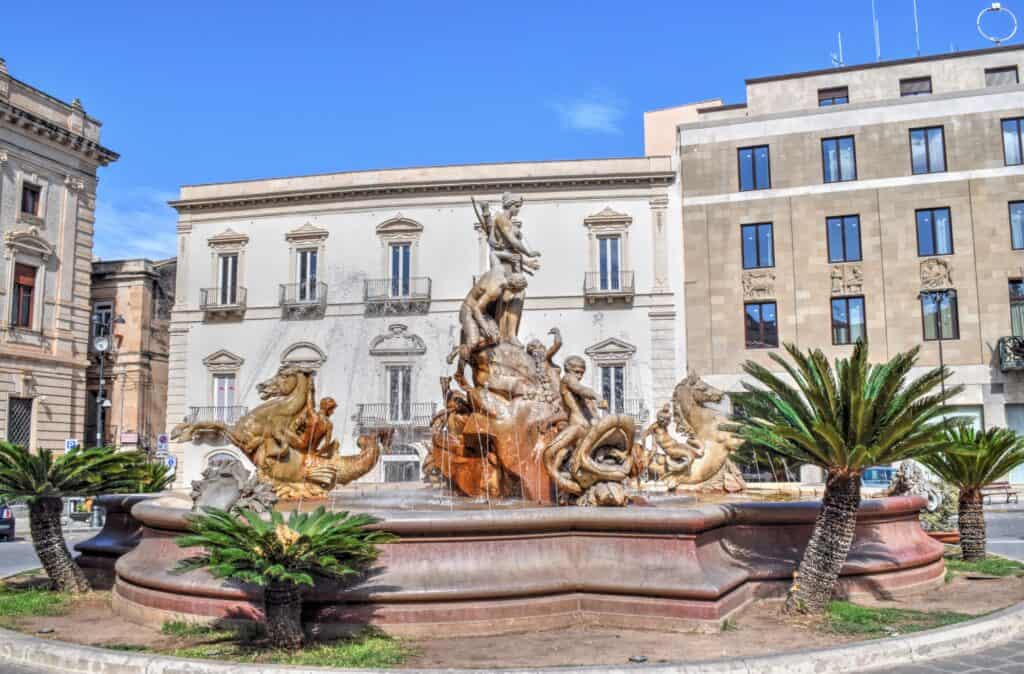
Near the center of Ortigia is the true piece de resistance of the historic center, the Piazza del Duomo. The piazza is as vast as it is elegant, and its central masterpiece, the Duomo (Cathedral), can be seen from every corner. The Cathedral itself is a baroque gem in the heart of the old town. It is one of a kind, an incredible crossroad of cultures. From Greek temple to Norman church, it houses incredible treasures: such as the ancient temple of Athena! The cathedral was built in the 7th century over the Temple of Athena (5th century BC), a Doric temple with columns that are still visible as they were incorporated into the walls of the current church.
If you are not ready to sit down and relax just quite yet, you can make your way to the very end of the island to visit Castello Maniace (open daily, but closes early on Sundays and Mondays) – Ortigia’s 13th-century citadel.
Dinner and evening
You won’t lack options when looking for where to have dinner. There are lots of options with outdoor seating in or near the Piazza del Duomo, which will allow you to soak up the lively Piazza atmosphere and provide ample people-watching opportunities. Alternatively, if you want ocean and/or sunset views, check out the restaurants along the Lungomare Alfeo (Promenade) and its crystalline sea views.
For a delicious meal without views or theatrics, we can highly recommend the following two restaurants, which are somewhat tucked away in quaint alleyways:
The evening is Siracusa is often the most enchanting part of the day when travelling during the warmer summer months, where the heat is less overbearing than it can be during midday and piazzas become more lively. After dinner, it’s hard to be a nice stroll through the historic center while sampling some gelato or one of Sicily’s desert delights, a delicious cannolo.
Multi-day itinerary
Planning to stay in Siracusa for more than one day? That’s awesome and lucky you! Here’s our proposed itinerary if you intend on staying in Siracusa for multiple nights.
Day 1 (described above): Morning at the Neapolis Archaeological Park and Greek Theater and afternoon/evening exploring Ortigia.
Day 2: Now that you’ve seen the main Ortigia sights, we recommend that you take a quiet morning stroll to admire some of the architecture and discover some random Ortigia side streets and alleyways while they are less crowded. The afternoon can be spent back in the modern part of Siracusa to explore Santuario della madonna delle Lacrime (the teardrop-shaped Basilica), the Catacombe di San Giovanni (System of underground tunnels with tombs & sarcophagi, dating back to the 6th century), and the Museo Archeologico Regionale Paolo Orsi (it contains one of Italy’s finest archaeological collections), which are within a few blocks of each other.
Day 3: Time for a day trip!
option 1: Vendicari Nature Reserve + the baroque town of Noto. If you are looking to stretch your legs along beautiful and scenic coastlines or to settle down on a gorgeous beach, Vendicari is the place for you. For more in-depth descriptions of the trails and beaches, check out the reserve’s official website. If you are afraid of missing out on some of the Baroque beauty highlighted in option 2, we’ve included Noto, whose geographical location makes it an ideal combination with Vendicari. Total driving time (including the return to Siracusa) is about 2 hours.
option 2: The Baroque towns of Ragusa and Modica. If you prefer an exploration of history and beautiful baroque architecture, we recommend that you make your way to one (or several) of the nearby Baroque towns. These 2 Sicilian towns are listed as UNESCO World Heritage Sites for their magnificent Baroque churches and palaces (and so is Noto). (including the return to Siracusa) is about 2h45 hours.
Day 4: Whichever of the day 3 options are left!
Practical information
When to visit?
To avoid the crowds and the mid-summer heat, Siracusa is best visited in late spring (April-May) or early fall (Sept-Oct).
Where to stay?
Aside from cost and accommodation type, your decision really comes down to either staying in Ortigia or in Siracusa outside of the historic center, and both have their advantages.
Staying in Ortigia obviously means you are close to the action and tourist center, but you are also likely to pay a bit more for your accommodation. Also, it’s a less ideal location if you are travelling by car as several areas of Ortigia are pedestrian only and you would be required to park on paid public parking lots that may not be close to your hotel/accommodation. For that reason, we chose to stay in an Airbnb that was just outside of Ortigia in the Santa Lucia neighbourhood, located roughly midway between Ortigia and the main attractions of Siracusa, and where there was ample free street parking.
Well, that wraps it up! We hope you enjoyed our Travel Guide on How to Spend a Day in Siracusa and that it will prove useful for planning your trip to Sicily!
—–
Preparing a trip to Sicily?
We highly recommend these guidebooks:
—–


